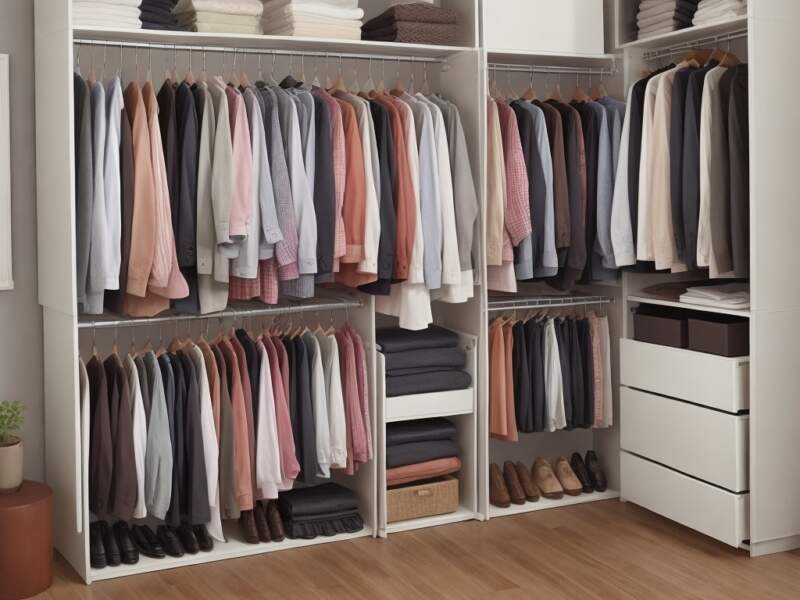One common question that comes up when you’re trying to organize your closet is, “How Should I Categorize My Clothes?”. However, organizing your closet is like making a work of art rather than just a tedious task. It can improve your everyday routines and simplify your life. There’s more to organizing your clothes than just cutting down on time spent searching through your closet. It’s also about figuring out your personal style and adding additional functionality to your outfit.
Categorize your garments starting with the most basic items. Sort related things (e.g., dresses, jackets, slacks, shirts) together. Your mornings will be easier if you follow this easy process to quickly locate what you need. Let’s get a little fancier now. Consider classifying your clothing according to the seasons. Not only is this useful, but it also makes it effortless to transition from warm to cool clothing. As winter gives way to spring, your closet should make it easy for you to find the lighter items while hiding the warmer ones.
But categorizing isn’t just about where things go; it’s also about understanding your style. Look at the colors, patterns, and textures in your clothes. Do you like keeping it simple with one color, or do you mix it up with different styles?
This categorizing journey isn’t just about making your closet look good. It’s also about knowing yourself better through your fashion choices. It’s like finding your unique style fingerprint. So, as you organize, remember that each part of your closet is like a page in your style story. Let’s delve into the various criteria for categorizing your clothes, exploring the significance and practicality of each.
Should I categorize my clothes?
Yes, categorizing your clothes can be a helpful and efficient way to organize your closet.
How Should I Categorize My Clothes?
Here are some tips by experts on how to categorize clothes:
1. Type of Clothing
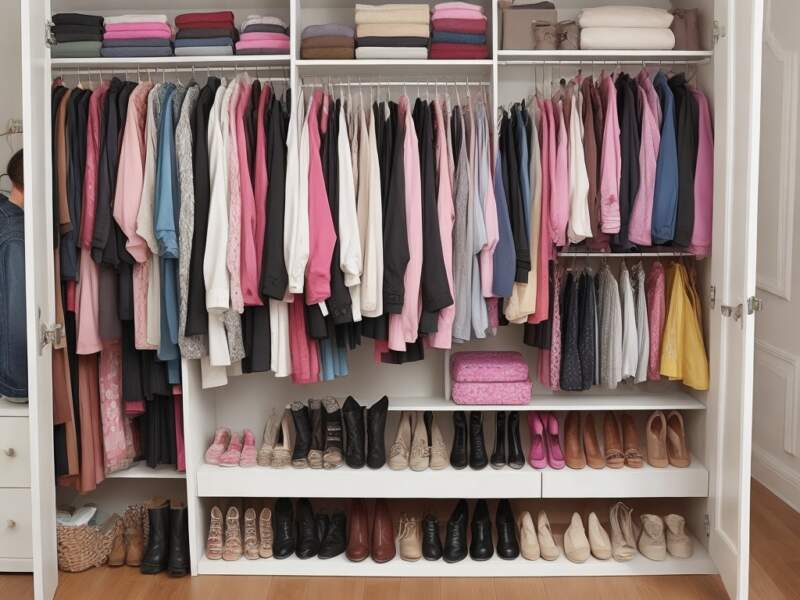
Image by NESTIC HOME
Selecting the right clothes for each category is like creating a custom collection. The organization gains depth and precision from this degree of granularity. Every category—from dresses to shirts to pants—becomes a well-chosen assortment, making it simple to find particular products at a glance. This tweak turns the arrangement from a chore to a carefully thought-out presentation of my clothes. The different types of clothing include tops, bottoms, dresses, outerwear, activewear, underwear, sleepwear, and more.
- Tops: This category encompasses a diverse range of upper garments, from casual T-shirts and shirts to elegant blouses and cozy sweaters. Grouping them together ensures you can quickly pick the right top for any day or event.
- Bottoms: Pants, jeans, skirts, and shorts fall into this category. Arranging them separately allows for easy access, helping you find the perfect match for your tops effortlessly.
- Dresses: From casual day dresses to formal evening gowns, categorizing dresses by occasion ensures you’re ready for any event with just a glance.
- Outerwear: Jackets, coats, and blazers are essential for various weather conditions. Grouping them together aids in seasonal transitions and quick choices when heading outdoors.
- Activewear: Whether you’re hitting the gym or going for a run, having workout clothes, sports bras, and leggings organized in one place makes it convenient to stay active.
- Underwear: Bras, panties, undershirts, and socks constitute the essentials. Keeping them organized ensures you start your day smoothly without searching for the right undergarments.
- Sleepwear: From cozy pajamas to nightgowns and sleep shirts, having a dedicated section for sleepwear enhances your bedtime routine.
2. Hangers
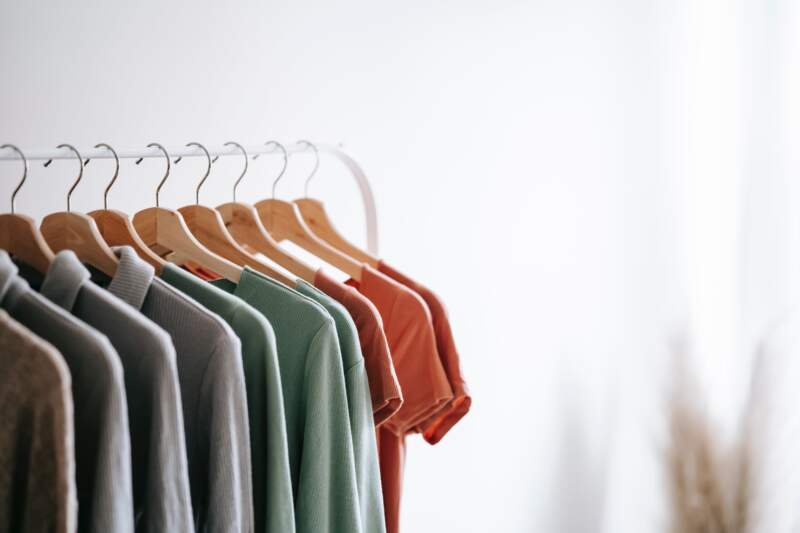
Hangers are the unsung heroes of the wardrobe organizing scene; they painstakingly preserve the quality of every item of clothing. They are more than just tools; they are the unseen keepers that make sure everything hangs straight and without wrinkles. By using high-quality hangers, You can make your wardrobe look like a shop, with each article of clothes being carefully and thoughtfully displayed rather than being tucked away.
3. Season
As the seasons change, so does the palette of your wardrobe. The organization by season breathes life into the closet, creating a dynamic and ever-changing display. The rotation between summer vibes and winter coziness ensures that your wardrobe is in constant sync with the weather, allowing you to effortlessly transition between the different facets of my style.
- Summer: Light and breathable clothes like shorts, T-shirts, and dresses are easily accessible for warmer days.
- Fall: As the temperature drops, having sweaters, long-sleeve shirts, jackets, and layering pieces in one place ensures a seamless transition to cooler weather.
- Winter: Heavy coats, scarves, gloves, sweaters, and thermal wear become readily available for staying warm during the coldest months.
- Spring: Transitional pieces, lighter jackets, and pastel-colored clothing allow you to welcome the freshness of spring with ease.
4. Occasion
Categorizing clothes based on occasions reflects your lifestyle and ensures you’re prepared for any event.
- Casual: Everyday wear for relaxed situations, making dressing for day-to-day activities a breeze.
- Formal: Business attire, evening gowns, or suits for special events, ensuring you’re always ready for formal occasions.
- Athletic: Dedicated to workout clothes for exercising or sports activities, emphasizing the importance of an active lifestyle.
- Sleepwear: Pajamas and comfortable clothing for bedtime, promoting a restful night’s sleep.
5. Drawing Dividers: Practicality and Aesthetic Appeal
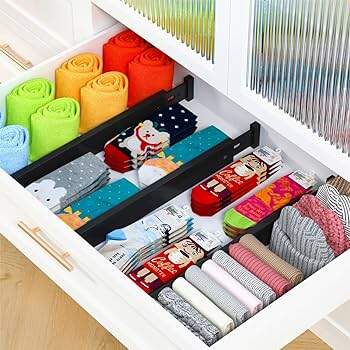
Rather than being an accident, the closet’s aesthetic appeal should be deliberately designed. Adding divisions within each category gives the functionality a refined touch. It’s all about designing an aesthetically pleasing and well-organized closet for daily delight. These separators gives clothing a little more refinement by acting as both useful tools and beautiful pieces.
6. Color

Grouping clothes by color isn’t just aesthetically pleasing; it’s a practical approach to finding specific items quickly.
7. Functionality
Understanding the functionality of your clothes is crucial for a wardrobe that aligns with your lifestyle.
- Workwear: Clothes suitable for your workplace ensure you maintain a polished and professional appearance.
- Lounge/Relaxation: Comfortable clothes for relaxing at home, creating a designated space for downtime.
- Outdoor/Active: Clothes for outdoor activities or sports, emphasizing the importance of staying active and prepared.
8. Size
How Should I Categorize My Clothes? is by size. Organizing your outfit according to size is a sensible method rather than a complying exercise. Sorting clothing based on size guarantees a systematic arrangement, averting the mad dash to find the perfect fit when getting ready. The purposeful arrangement of things according to size improves the effectiveness of the arrangement and makes choosing the ideal outfit effortless. Arranging clothes by size is a practical consideration, ensuring you can easily locate items that fit well.
9. Accepting Vertical Storage: Making the Most of Space
It takes a calculated step to uncover the hidden dimensions in your closet—embracing vertical storage. Honestly speaking, making use of vertical space is like opening a hidden room, and it’s especially important in tiny homes. A visually appealing and functional closet layout is produced by purposefully utilizing vertical storage, which also adds a dynamic dimension to the arrangement and maximizes available space.
10. Accessories
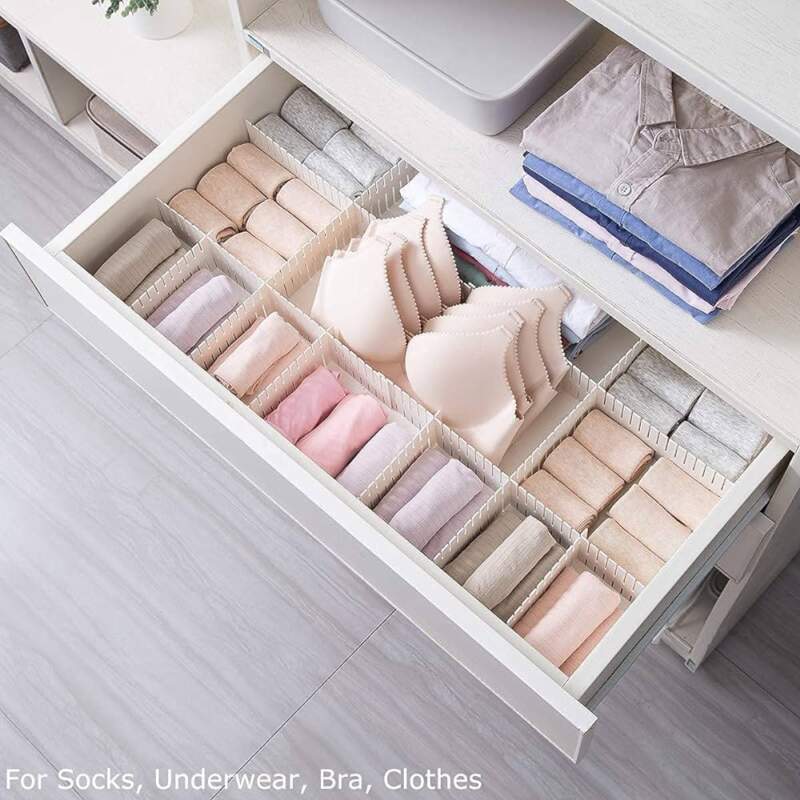
Accessories are the unsung heroes of fashion; they give an ensemble the last touch. It’s like having a treasure trove right at my fingers when you have a special place for accessories. You can easily add the ideal flare to any outfit because of its deliberate organizing, whether it’s a classic watch or bold jewelry. It’s about designing a carefully considered area for those finishing touches that boost my style, not just about accessories. Keeping accessories like belts, scarves, hats, and jewelry in a separate category not only preserves their quality but also adds a finishing touch to your outfits.
11. Special Categories
Finally, special categories like costumes and sentimental items add a personal touch to your wardrobe.
- Costumes: If you have any costumes or themed clothing, keeping them separate allows you to embrace your playful side when the occasion arises.
- Sentimental Items: Clothes with sentimental value or special memories deserve a dedicated space, honoring their significance in your life.
Conclusion: Categorize your clothes for a perfect wardrobe experience
In conclusion, It’s not merely about categorizing; it’s about creating a space that reflects your evolving style, preferences, and cherished memories. TBH, finding harmony in wardrobe chaos is an ongoing process, but the key is to infuse it with a personal touch. Honestly speaking, your wardrobe is not just a functional entity; it’s a canvas—paint it with the colors, styles, and stories that make you, well, you!
FAQ’s
Should I organize clothes by color or style?
The decision to organize your clothes by color or style ultimately depends on your personal preferences, lifestyle, and how you mentally navigate your wardrobe.
Organizing by Color:
Pros:
- Visual Appeal: Organizing by color can create a visually pleasing and harmonious display in your closet. It makes your wardrobe look cohesive and can be aesthetically satisfying.
- Easy Retrieval: Locating specific items becomes quicker, especially if you have a vivid memory of the color you’re looking for.
- Effortless Coordination: Matching and coordinating outfits becomes more intuitive when clothes are grouped by color, as you can easily see complementary or contrasting options.
Cons:
- Style Disregard: This method doesn’t consider the style or type of clothing, which might make it challenging to find specific styles or pieces.
- Limited Aesthetic Range: If your wardrobe primarily consists of similar colors, the visual impact might be limited, and the organization might not be as effective.
Organizing by Style:
Pros:
- Easy Style Access: Grouping clothes by style allows for quick access to specific types of clothing, making it easier to plan outfits based on occasions or moods.
- Functional for Different Activities: If your lifestyle involves various activities, such as work, workouts, and social events, organizing by style can help you quickly locate the appropriate clothing for each.
- Wardrobe Assessment: Organizing by style allows you to easily assess if you have a balanced wardrobe that covers all necessary categories, from casual to formal.
Cons:
- Visual Disarray: Your closet might appear less visually cohesive if there’s a mix of colors and patterns within each style category.
- Color Coordination Challenges: If you enjoy color-coordinated outfits, organizing by style might make it slightly more challenging to visualize color combinations.
What is the color order for organizing?
There isn’t a strict universal rule for organizing colors, but many people choose to organize them in a way that follows the natural progression of the color spectrum or based on personal preference. One common method is to arrange colors in the order of the rainbow: red, orange, yellow, green, blue, indigo, and violet. This sequence is often referred to as ROYGBIV.
Here’s a breakdown of the color order:
- Red: Start with red, the first color of the rainbow.
- Orange: Followed by orange, the next hue in the spectrum.
- Yellow: Continue with yellow, creating a warm and vibrant section.
- Green: Progress to green, representing the colors of nature.
- Blue: Move on to blue, introducing cooler tones.
- Indigo: Though not always included, indigo is a deep blue-violet color and is sometimes added between blue and violet.
- Violet: Conclude with violet, the last color of the rainbow.
When organizing by color, you can further subdivide each color category by shades and tones. For example, within the “blue” section, you might arrange items from light blue to navy.


